Legacy Audio Focus SE Loudspeakers
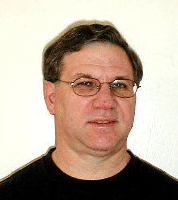
Back in the early 90’s one of my audio friends began selling audio products out of his basement in NJ. One of the speaker lines he sold was supplied by Legacy Audio. I recall that his favorite Legacy speaker was an early iteration of the Focus which had very large woofers and a very classy furniture-grade finish. Heck, I liked them too but at the time I was into electrostatic speakers driven by tube amplifiers and it was hard for me to veer out of that mindset.
But over the years I’ve witnessed a steady progression in the technology of dynamic-driver speakers. The quality of the internal wiring and crossover components has evolved to high-purity copper and/or silver wire, and air-core and foil inductors, exotic capacitors and high-grade resistors, etc. And likewise speaker cones are now routinely made from materials other than paper such as Kevlar, Rohacell, ceramic, carbon-fiber impregnated paper, and others. For the high frequencies not only do we see very high-performance hard and soft-dome tweeters using exotic materials like titanium and beryllium, but ribbon tweeters are now commonplace and the air-motion-transformer (AMT) is seeing quite a resurgence. In my experience these AMT tweeters can be quite fast, airy, and detailed. This not to mention that the motors that drive the dynamic cone speakers have become larger, and use massive and very powerful neodymium magnets for greater power, efficiency, and control. So despite claims from the retrophiles that like to think vintage speakers made 30 to 50 years ago are the “best,” I beg to differ. From a technical standpoint some of the vintage drivers using Alnico magnets and paper cones performed quite well, but not to the standards of today’s more advanced driver designs.
Legacy Audio was founded by Bill Dudleston in 1983. Legacy speakers have received excellent reviews in the audio press by such publications as The Absolute Sound, Stereophile, Home Theater Magazine, Positive Feedback, and others. What is perhaps even more impressive is that Legacy Audio speakers are being used in the professional recording industry by companies like Sony, Arista, Universal Music Group, and Mercy Sound Studios in New York City. They have aided in mastering recordings by well-known artists such as Sheryl Crow, Johnny Cash, Tom Petty, Mariah Carey, Red Hot Chili Peppers, and Usher. And the notable, audiophile-approved re-mastering engineer Steve Hoffman has employed Legacy speakers in producing re-issues of work by the legendary artists: Elvis Presley, Frank Sinatra, and Nat King Cole. And Bill Dudleston and Legacy Audio have been cited in Billboard and The Wall Street Journal so you could say that Legacy Audio has developed quite an impressive resume since its inception.
Features & Technology
As I alluded to above, the drivers that Legacy Audio employs in its loudspeakers are evolutionary. Legacy’s design team has fabricated a proprietary, Dual AMT driver that contains very powerful neodymium magnets and many folded layers of Kapton resulting in a rugged and efficient tweeter that spans the high frequency range from 2.8 kHz to 30 kHz—way beyond the limits of human hearing. Descending from the lower treble to the upper bass are two interwoven 7” Silver-Graphite drivers built on sturdy cast frames. About 18 months ago Legacy upgraded the previous 7” midrange with a lower mass diaphragm, and a significantly larger magnetic structure (above photo). Still utilizing the same central phase plug, the new driver affords lower distortion and better transient behavior.
The bass section consists of two 12” spun aluminum cone, long-throw subwoofers with rubber surrounds and enclosed motor assemblies using powerful neodymium magnets in a ported enclosure. The bass section uses and assisted 6th-order Butterworth crossover and the response is only 2 dB down at 18 Hz. Now that’s a firm bottom end!
For me, the one spec that stands out is the speaker’s 95.4 dB/watt “in-room” efficiency rating. While this specification appears to include room gain I did notice that my Volume control setting was normally running 4 to 5 dB lower than it did with my VMPS speakers that are rated at 90dB/watt. This means that the Focus SE’s are quite efficient and can be driven to satisfying output levels with amplifiers of modest output power. I wouldn’t hesitate to use a good 40 to 50 watt/channel tube amplifier with these speakers, and if I had the room I’d likely bi-amp them with a sweet 50 watt/channel tube amp on the midrange and highs and a brutish solid-state monster running the bass section. Yeah boy!
One fact that impresses me is that the drivers in the Focus SE are matched to within +/- 0.25 dB, and this data is recorded in Legacy’s database and archived by serial number.
The cabinet is a tapering design to eliminate standing waves and is deeper and better reinforced than previous Focus versions. The upper side edges of the front baffle are sculpted to minimize diffraction effects at higher frequencies, and even the removable grills have been reshaped to keep diffraction to a minimum.

There are two sets of high-quality speaker binding posts so that the speakers can be bi-wired or passively bi-amped and they come with straps so that a single stereo amplifier can drive them as well. There are two 2-position switches on the back of each speaker. The upper switch allows a mild high-frequency roll off (especially useful during break-in), and the lower switch decreases the bass output in the mid-bass to allow for better room integration, especially in smaller rooms. In my view, with the amount of bass and output a pair of Focus SE’s can provide they should be given room to breathe in large-size rooms. Indeed, in a small room these speakers might need extra bass equalization in addition to the mid-bass EQ switches on the speakers. In my 30-ft-long room I had to move them a bit farther from the front wall than my usual reference speakers, the VMPS RM40s, which have fairly extended bass response—and that was even with the bass switches in the “Cut” position.
The Focus SE’s come with heavy-duty rubber feet installed and Legacy also includes Black Chrome pointed feet with matching metal coasters, which adjust to allow the speakers to be tilted for those who prefer that set up. I stuck with the rubber factory feet for my review.
I found the fit and finish of the Focus to be quite elegant and aesthetically appealing. The Focus SE is available in quite a few appealing wood veneers. Legacy has established 3 tiers for their finish groups: Standard, Premium, and Exotic and as one ventures up to the Premium and Exotic finishes the price increases. According to my recent price list the Standard Finish models retail for $10,615, the Premium Finish models cost $11,495, and the Exotic Finishes will set you back $11,990, but they are quite attractive and will be worth the extra dollars to some buyers. I chose the Premium Rosewood veneer, which I understand is a popular favorite. My wife and I enjoy the warm reddish hue of it in our particular room.
Set up
In my 14’ x 30’ room with high vaulted ceiling I wound up with the speakers positioned with the front baffles 43 inches from the front wall and close to the same distance from each side wall. They are about 7’ apart center-to-center and are toed-in moderately. My listening seat is about 12’ back from the plane of the speakers (slightly more than half-way back in the room). This allowed for an expansive soundstage that was very wide and had moderate depth as well.
I began my listening using the Lyngdorf DPA-1 pre/pro in its EQ bypass mode into the Benchmark Media AHB2 Class AB solid-state amplifier and obtained very good results. But as it happened, I got even better results powering the Focus SE with the Rogue Audio Medusa tube hybrid amplifier, which is a bit more laid back than the Benchmark AHB2 and was a better match for the bold and slightly forward character of the Legacy Focus SE.
One thing I should note is that in my room almost every speaker I’ve tried has needed a fair degree of electronic equalization in order to sound its best. With the Focus SE I found that the sound was quite satisfying even in the EQ bypass position of the Lyngdorf DPA-1, which I have to admit was a first. Later on in my listening when the speakers were over their break-in issues I ran the RoomPerfect EQ on the Lyngdorf. This made subtle improvements in imaging and offered some different voicing options that benefitted some recordings. But even with this sophisticated digital room EQ, I still found myself preferring to hear certain recordings in the bypass (no-EQ) mode. And I liked having the option to not use the equalization as a reality and reference check.
The Sound
The first thing I noticed about the sound of the Legacy Focus SE speakers was that they have very powerful and very abundant bass. This caused me to move them a few inches further out into the room than my previous VMPS RM40 speakers. Even then I preferred to use the Bass Cut switches to thin the bass out even more. I heard one Focus SE owner say that the Bass Cut feature removes too much of the mid-bass and makes the speakers sound thinner than they should, but this was not the case in my room. My large room seems to have a broad bass peak somewhere around 125 Hz, and in this room the Bass Cut feature worked quite well. That being said, even with the bass cut the Focus SE’s may still have too much bass energy for some rooms. In fact I would guess that in many smaller rooms the Focus SE’s could require electronic equalization to tame their potent bass performance. So I can see where the Focus SE’s can really come into their own in larger rooms where they have room to open up and breathe.
The good news is that when set up properly in a capable room the Focus SE’s produce very deep, powerful and articulate bass. Drum kits and all sorts of percussive instruments sound very real and live. Playing the first movement of Stravinsky’s L’ Histoire du Soldat from Igor Stravinsky Conducts, 1961 (Columbia MS 6272) there is a really cavernous sounding bass drum for punctuation at the conclusion of the movement and over the Legacy speakers, the word “punctuation” is an understatement. One can hear the whole of the drum, its initial strike and the echo both inside the drum and inside the venue. Its scope is large and powerful yet it is not overbearing.
This LP vinyl recording contains many natural acoustic instruments playing in the orchestra including brass, woodwinds, strings, and percussion instruments. It is a good indicator of a loudspeaker’s ability to sound authentic. The Focus SE speakers provide a very accurate reconstruct of all these instruments in terms of their tonal character and individual personalities. Where they part company with most other speakers lies in their ability to reproduce lifelike dynamic contrasts (both micro and macro) over the full audible frequency spectrum. Whether it’s the body and presence of struck cymbals or wood blocks, the delicacy of a triangle ringing, or a full symphony orchestra blaring at full tilt the Legacy Focus SE’s capture these musical moments extremely well. And not only do they do justice to classical and symphonic music, they are a real hoot pumping out the beat in dance or rap music or portraying a bombastic drum kit accompanied by vocals and wailing electric guitars. One gets the feeling that he or she is actually attending a live event. This is because as the music gets louder the Focus SE’s do not compress the sound nearly as much as most other speakers do. This is due to their very robust driver array using powerful neodymium-based motors for their superior articulation and efficiency. They let the music soar in unbridled splendor. Fortissimos and crescendos emerge unfettered, clear, and lifelike. I am able to listen to the Focus SE louder than any of my previous speakers because these speakers seem to distort less at higher levels and are easier on the ears when playing LOUDLY. Still, they are not PA speakers so some degree of common sense and restraint should be observed… if not for the sake of the amplifier and speakers then for the sake of your own auditory capability.
So go ahead, make your day—put on your favorite symphonic overture, Broadway play score, or movie soundtrack and let ‘er rip! That’s what I did and I had a great listening experience. Playing George Gershwin’s Rhapsody in Blue conducted by Lorin Maazel circa 1974 (United Artists UA-LA441-G), I was struck by the scale and dynamic breadth of the piece. And it was not only the punch of the bass and the crescendos that blew me away. It was the subtle dynamic gradations I heard from the piano, from the very soft and subtle to medium intensity and then back, and then on to the much louder pounding of the keys on fortissimos. It was a treat for the ears and the heart!
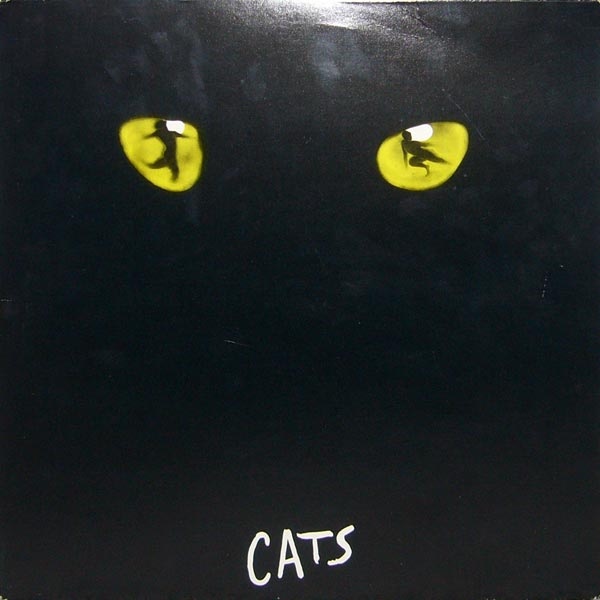 Similarly, when playing the soundtrack from the Broadway play Cats (Geffen 2031-2) and even on the movie soundtrack from Chicago (Epic/Sony EK 87018), I was hearing each instrument, voice, and subtle nuance come through with all their attendant nuances and inflections. In other words the music was rendered in a very emotive and natural way that enhanced my musical pleasure and sucked me into the performances causing me to extend my listening sessions for longer than I had planned. And when I played “Cell Block Tango” performed by Queen Latifah and Lil’ Kim from the aforementioned Chicago Soundtrack I thought the bass impact was going to break my house. Heck, much of the time I didn’t even take notes because I was in my glory, relaxing and tappin’ my toes to the music.
Similarly, when playing the soundtrack from the Broadway play Cats (Geffen 2031-2) and even on the movie soundtrack from Chicago (Epic/Sony EK 87018), I was hearing each instrument, voice, and subtle nuance come through with all their attendant nuances and inflections. In other words the music was rendered in a very emotive and natural way that enhanced my musical pleasure and sucked me into the performances causing me to extend my listening sessions for longer than I had planned. And when I played “Cell Block Tango” performed by Queen Latifah and Lil’ Kim from the aforementioned Chicago Soundtrack I thought the bass impact was going to break my house. Heck, much of the time I didn’t even take notes because I was in my glory, relaxing and tappin’ my toes to the music.
Bill Dudleston was kind enough to send me a demo music sampler and it contained a lot of really great tracks by some extremely talented artists. One that really hit me was Jen Chapin’s version of Stevie Wonder’s “You Haven’t Done Nothin’.” The track begins with a very potent bass fiddle on the right channel (being strummed, plucked and generally pounded) and then Jen’s vocal appears in the center with an excellent sounding bass sax at the far left of the soundstage. This track sounded so authentic and dynamic and the soundstage was truly enormous—room encompassing, really. This caused me to get right on my computer and order up three Jen Chapin albums, and I can’t wait until they arrive so I can listen to more of Harry’s daughter’s beautiful music.
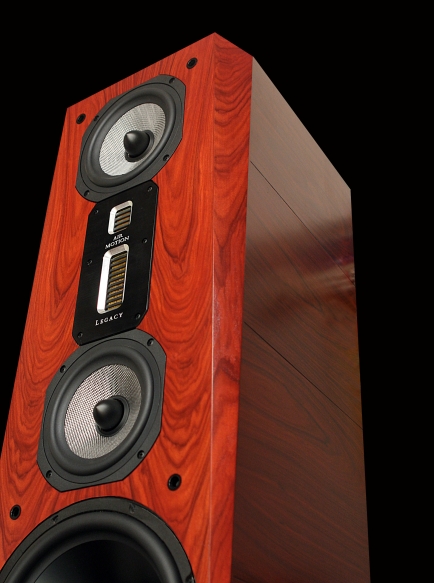
Caveats
First thing is that the speakers are somewhat large at 55 inches tall by 14 inches wide, and fairly heavy at 177 pounds each (shipping weight), and they do seem to excel in large and mid-size rooms as opposed to smallish rooms due to their very deep and powerful bass performance. That being said, Legacy Audio’s Bill Dudleston told me he’s seen dozens of Focus SE owners attain very good results in rooms on the order of 12’ x 16’. And if the room is truly problematic Legacy offers other solutions for controlling the bass via either an internal trap filter or an external passive network that has 4 positions with each of the two switch positions on the speaker itself for a total of 8 different bass settings. Dudleston says the filter works quite well to tame room-associated bass nodes.
He provided the following description of the filter unit:
It is an outboard module that works just like the trim switch on the speaker. It is low Q. The customer can request a higher or lower target center frequency. It houses a trap filter with a custom wound inductor and switchable capacitors. The resistors are high power rated sand cast. They measure about 5″ long x 3.5″ x 2.75″ and are $120 each [$240/stereo pair, and this also requires that you have a way of measuring or knowing what your “target center frequency” is, Ed.].
This being the case, Legacy also provides a similar speaker in their Signature SE model that is like a scaled down Focus SE using the same proprietary Legacy dual AMT tweeter but only one 7” Rohacell midrange driver and two 10” woofers instead of the two 12-inchers found in the Focus SE. The Signature SE would likely be a better fit for medium size listening rooms and is priced a bit lower at only $6,995 for Standard Finishes and up to $8,250 for the Exotic Finishes.
Legacy suggests a break-in period of roughly 150 hours and I would agree with that. The Focus SE’s sound a bit rough in the highs right out of the box. But I played them several hours each day for a couple of months at a healthy volume and with all kinds of music. After the 150 hour mark they opened up quite a bit and the highs became smoother as did the upper midrange/lower treble area.
I believe there is a small bump in a narrow frequency band in the lower treble that smoothes out a bit over time and thankfully it is not in the band that accentuates the surface noise on vinyl records. It does add a touch of sparkle and presence giving the speaker a mild West-Coast slant. I hear it mostly as lower treble halo or tizz riding on the vocals on a few of my recordings and it is likely a result of vocal processing added in during the recording process. My best example of this occurs on The Royal Tenenbaums Soundtrack CD (Hollywood 2061-62347-2) on John Lennon’s “Look at Me,” and on Elliott Smith’s “Needle in the Hay.” This lower treble noise can be heard on other speakers and headphones, but it seems to be further down in level when compared to the Focus SE’s.
Conclusion
In this latest version of the Legacy Focus SE speakers Bill Dudleston and his design team have succeeded in creating a rugged, very dynamic, aesthetically appealing, full-range loudspeaker that should provide many years of musical enjoyment to music lovers and to those who simply like to dance and party and have a great time.
I very much enjoyed my time evaluating the Focus SE speakers and although the $10,615 base price is not inexpensive, I believe it is quite the bargain for a product that affords its owners this much potential for creating a marvelous, near state-of-the-art home music system, one that is sure to be enjoyed and appreciated by loved ones, friends, and guests.
The next time you read one of my reviews done in my Large-Room Reference System, you will see these rather stylish party animals listed as my new reference loudspeakers.


frank alles
Price: Standard Finish: $10,615; Premium Finish: $11,495; Exotic Finish: $11,990
Description
Focus SE Loudspeakers
Dimensions: 55”H x 14”W x 15.375”D
Shipping Weight: 177 lbs. each
For further information on specifications and finish options please visit: http://legacyaudio.com/products/view/focus-se/
Manufacturer
Legacy Audio
3023 E Sangamon Avenue
Springfield, IL 62702
United States of America
E-mail: info@legacyaudio.com
Phone: 217-544-3178
Toll Free: 800-283-4644
Web: www.legacyaudio.com
Sales: sales@legacyaudio.com
Service: service@legacyaudio.com
Stereo Times Masthead
Publisher/Founder
Clement Perry
Editor
Dave Thomas
Senior Editors
Frank Alles, Mike Girardi, Russell Lichter, Terry London, Moreno Mitchell, Paul Szabady, Bill Wells, Mike Wright, and Stephen Yan,
Current Contributors
David Abramson, Tim Barrall, Dave Allison, Ron Cook, Lewis Dardick, John Hoffman, Dan Secula, Don Shaulis, Greg Simmons, Eric Teh, Greg Voth, Richard Willie, Ed Van Winkle, Rob Dockery, Richard Doran, and Daveed Turek
Site Management Clement Perry
Ad Designer: Martin Perry


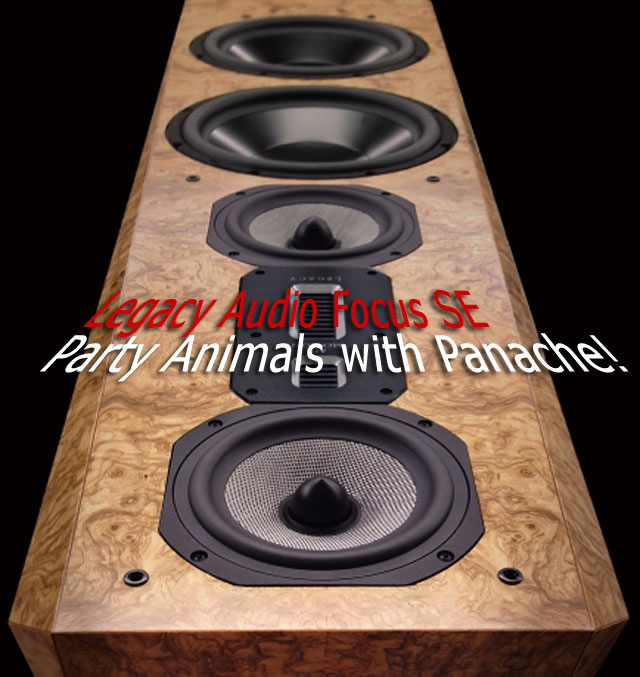
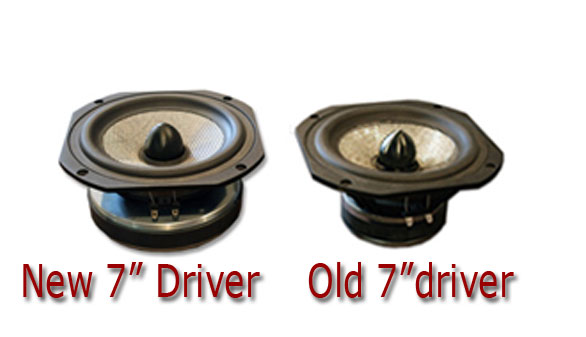


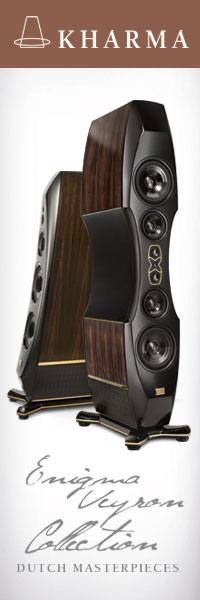
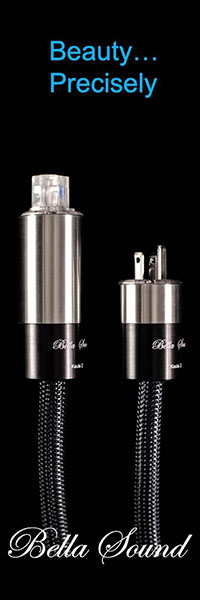
Be the first to comment on: Legacy Audio Focus SE Loudspeakers